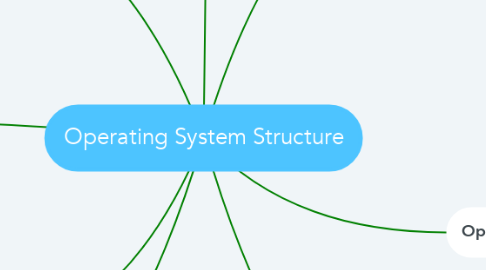Operating System Structure
by Edric Lim


1. Additional Operating System Functions
1.1. Resource alloction
1.2. Accounting
1.3. Protection and security
2. Communication models
2.1. message passing
2.2. shared memory
3. Layered Approach
3.1. The operating system is divided into a number of layers(levels),each built on top lower layer
3.2. The bottom layer,hardware,the highest(layer N) is the user interface
3.3. Simplicity of construction and debugging but less efficient
4. Operating System Design
4.1. Start by defining goals and specifications
4.2. Design of system will be affected by the choice of hardware and type of systems
5. Operating System Design Goals
5.1. User goals
5.2. System goals
6. Operating System Service
6.1. User interface
6.2. Program execution
6.3. I/O operations
6.4. File-system manipulation
6.5. Communications
6.6. Error detection
7. System Calls
7.1. Provide the interface between a running program and the operating system
7.1.1. Process control
7.1.1.1. Create process,terminate process
7.1.2. File management
7.1.2.1. Create file,delete file
7.1.3. Device management
7.1.3.1. Request device,release device
7.1.4. Information maintainance
7.1.4.1. Set time and date
7.1.5. Communications
7.1.5.1. Create/delete communication connection
7.1.6. Protection
7.1.6.1. Set permission
8. Microkernel
8.1. Small operating system core
8.2. provide service
8.2.1. Device driver
8.2.2. File system
8.2.3. Virtual Memory manager
8.2.4. Windowing system
8.2.5. Security service
8.3. Benifits
8.3.1. allow the addition of new service
8.3.2. Existing feature can be subtract
8.3.3. modular design

